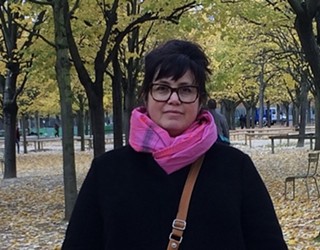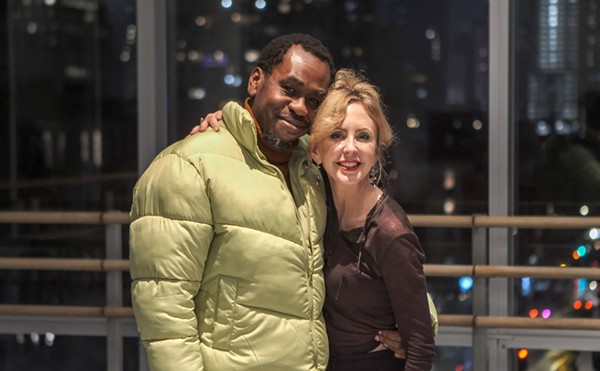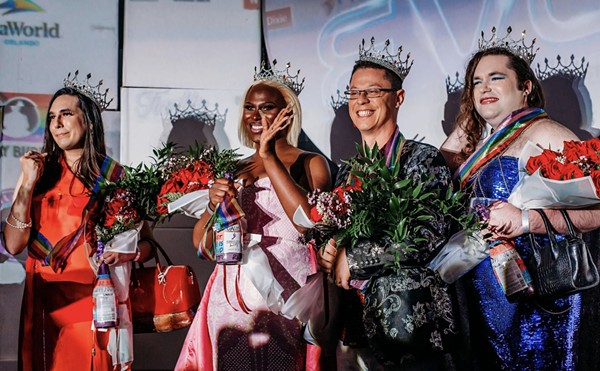Betsy Greer, Leanne Prain and Kim Piper Werker are all makers – or crafters, or artists, or whatever label you want to use to identify the process of making a thing where before there was no thing. All three have books out now (-ish; Prain’s publication date has been pushed forward to Oct. 14) that ask the same questions, though each approaches from a slightly different angle: What is the difference between craft and art? And can art change the world?
The first time I really experienced a successful mashup of fine art conceptualism, traditional female handicraft and political activism was in the work of Los Angeles artist Lisa Anne Auerbach. Her sweaters, exhibited at galleries internationally, bear witty slogans on reproductive rights, voting, war and other social issues knitted into their traditional Scandinavian patterns; each one is like a cross between a ski sweater and an anarchist zine. It was an epiphanic moment when I got the message – not just the overt political one, but the deeper one that said “women’s work” could be art too, and it could even be political.
But of course, it shouldn’t have been. We ’80s kids grew up with the mother of all modern activist craft: the AIDS Memorial Quilt, a stitched elegy to thousands of AIDS casualties that channeled the grief and justified rage of those left behind into a massive comforter that could never truly comfort but at least bears witness. (The quilt, which the NAMES Project calls “the largest ongoing piece of community folk art in the world,” now weighs 54 tons and honors more than 94,000 people.)
With the popularity of Maker Faire, Grandma Party Bazaar and the Cardboard Art Festival, we know that Orlando is on board with the DIY movement and not fussed by any lines drawn between craft and art (a gender-based distinction if ever there were one). Agustina Woodgate, winner of the Orlando Museum of Art’s inaugural Florida Prize, stitches social commentary into her rugs sewn together from the “hides” of discarded stuffed animals; in the same exhibition, Jillian Mayer’s instructional videos on how to use makeup and clothing to elude facial-recognition technology certainly qualifies as craft-based activism. Woodgate contributes an interview, in fact, to Strange Materials.
Prain, Greer and Werker are doing a joint U.S. tour supporting their books, but the closest it comes to us is a stop at the Smithsonian in Washington, D.C. Regardless, reading the three books concurrently is a good idea – each enriches and supports the other.
Craftivism: The Art of Craft and Activism
edited by Betsy Greer | Arsenal Pulp Press | 256 pages
In 2002, Betsy Greer wrote on her blog that “the creation of things by hand leads to a better understanding of democracy, because it reminds us that we have power.” Conversely to Strange Material, one might expect Craftivism to focus solely on yarn bombing, giant protest puppets and stitched picket signs, and that overtly political element is present – e.g., Craft Cartel’s “Cunt Fling-ups,” fabric female genitalia flung over power lines: “Some say gangs fling shoes this way to mark their territory. We do it to reclaim the streets for feminists and the word as a descriptor of things deep, warm and delightful.” But the artists Greer speaks to are not simply crafting strident statements – there’s a sense of humor and humanity along with a genuine aesthetic inquiry in their work.
Strange Material: Storytelling Through Textiles
by Leanne Prain | Arsenal Pulp Press | 257 pages
“Systematically underrepresented in art history, textiles often carry the stories of those whom society overlooks: women, children, slaves, immigrants, Aboriginal peoples, housewives, stay-at-home fathers, the ill, the disappeared, the displaced and the grieving.” Working from the premise that traditional fabric crafts were and still are used to commemorate or communicate personal histories, Leanne Prain intersperses interviews with artists who work with cloth, yarn and thread – sewing, embroidering, knitting their art – with prompts for readers to create their own stitched or woven works. This book is more oriented to an exploration of individual technique and theory than to political discourse, though inevitably it creeps in – Diane Bush’s ImBLEACHment performances and Sarah Corbett’s “Resistance Masks” are two notable examples.
Make It Mighty Ugly: Exercises and Advice for Getting Creative Even When It Ain’t Pretty
by Kim Piper Werker | Sasquatch Books | 240 pages
Less fine-art focused than Strange Material, more inward-looking than Craftivism, Kim Werker’s Make It Mighty Ugly is the most directly engaging of the three books. The three-step plan for just-doing-it that Werker espouses can be seen as a way of living, a personal manifesto with applications beyond art. (You can change the world or you can just change your own world.) While the exercises and prompts can verge on self-helpy at moments, it is up to the reader whether to apply Werker’s technique to one’s art practice, one’s crafting hobby or one’s entire life. Illustrations by Kate Bingaman-Burt and brief interviews with working artists throughout make it an enjoyable read, even if it doesn’t move you to action.


















